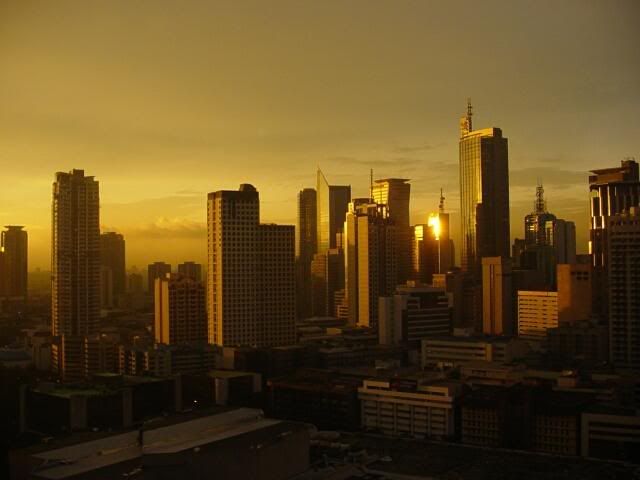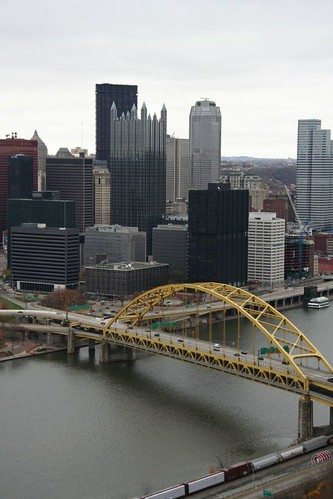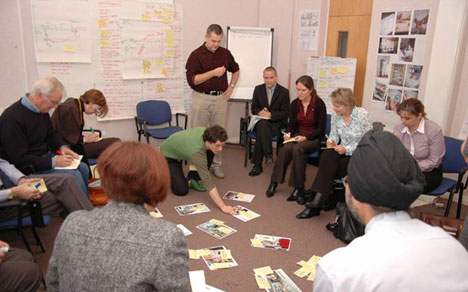mbo or gbn
 That's Management By Objectives vs. Governing By Numbers.
That's Management By Objectives vs. Governing By Numbers.
I was reading through Willy Priles' latest post on the prospects of implementing the principles of New Public Management (NPM) in the Philippines and wondered if NPM's MBO style management would be more effective if it were paired with Citistat's model of Governing By Numbers.
Citistat, which garnered a prestigious Innovations in American Government Award from Harvard's Kennedy School of Government in 2004, was a program pioneered in Baltimore City by then Mayor Martin O'Malley. (O'Malley was recently elected governor of the state of Maryland). The Mayor implemented CitiStat (based on the ComStat program pioneered in the New York City Police Department by Jack Maple) as a government accountability tool and basically used it to run the city.
This is how the KSG Award site describes the working of Citistat:
"In bi-weekly meetings, the manager of each city agency must stand at a podium and answer questions from a panel led by the mayor or his appointed inquisitor. The questions are culled from CitiStat's statistical analyses of the agency's previous two-week performance. During the meeting, various images are projected onto two screens behind the manager: graphs of performance, recent pictures of job sites, and even the manager's face beside a performance chart. However, CitiStat was not created to assign blame; it was created to generate personal accountability for the City's challenges and focus efforts towards producing quick, effective results. In Mayor O'Malley's words, CitiStat "puts a face on the problem."
Sitting behind the manager's podium are heads of other relevant agencies. When a problem is attributed to resources or inter-agency cooperation, the other managers may be called upon to help find a solution. For instance in 2004, when an agency fell behind its goal for cleaning up after street repairs, the manager complained of inefficient four-man crews lacking sufficient equipment. The resolution, after consulting the finances manager, was to purchase more effective equipment, allowing each crew to be reduced to two. Ultimately, this permitted the department to clean twice the number of sites at approximately the same pace.
CitiStat's primary innovation is its ability to tailor performance evaluations to each agency: the animal control manager must explain an increase in strays and propose a solution; the housing manager must explain a chart of vacant houses and the plans to resolve this problem; all managers may be asked to explain each hour of their department's overtime."
How effective was Citistat? The program cost the city $400,000 to implement, and they reaped over $100 million in savings in the first 4 years. And lest you think it requires some fancy proprietary software, Baltimore built the system on largely off the shelf GIS software and often kept the data on simple excel spreadsheets. Which makes me believe Willy's home city of Naga, and our other small innovative cities can readily implement this system. (This can work very well with Naga's great GIS maps.)
So how could this help NPM? Citistat's 4 tenets:
- Accurate and Timely Intelligence
- Effective Tactics and Strategies
- Rapid Deployment of Resources
- Relentless Follow-Up and Assessment
- Lean State – reduced tasks performed by state
- Separation of Decision Making Levels – Separation of the strategic from the operative level: politics decides the what, administration the how
- Lean Management – Combination of management by objectives, flat hierarchy, project management, performance related payments, modern methods of leadership
- New Service Attitude – Customer orientation: satisfaction in the center of all considerations, behavioral changes
- New Model of Control – Steering by clear targets, measurement of results, transparency of resource allocation
- Decentralization – Task, responsibility, competence and budget in the hand of the project manager/ department manager
- Quality Management – Ensure high service quality through qualification, competition, transparency
- Product Approach – Describing all administrative service as “products” highlighting factors such as: features, cost, needed resources, and time to deliver
Where NPM is internalized and qualified -defining the management model for public administration; Citistat is externalized and quantified -measuring the performance of government in very concrete terms. ("Since CitiStat's statistics are published on the city website, the public also benefits from the increased governmental transparency.")
NPM is about the philosophy, outlook and motivation of government (e.g. -"emphasizing the centrality of the customer"), while Citistat is about nuts and bolts and the response times of the nervous system of government (e.g. "measuring how long it takes to get a pothole repaired from the moment it is first reported.").
Both are innovations that can be implemented at the local level (as Wily recounts in the Naga experience) and entrepreneurial local mayors and governors can move forward with either system without having to wait for the national government's initiative.
(In a sense, Naga is already doing a similar program to Citistat with their Netserve initiative that gives citizens expected delivery response times for various city services.)
You can find out more about Citistat and Governing by Numbers by reading Daniel Esty and Reece Rushings recently released report for the Center for American Progress.
from the Citistats Reports page.










